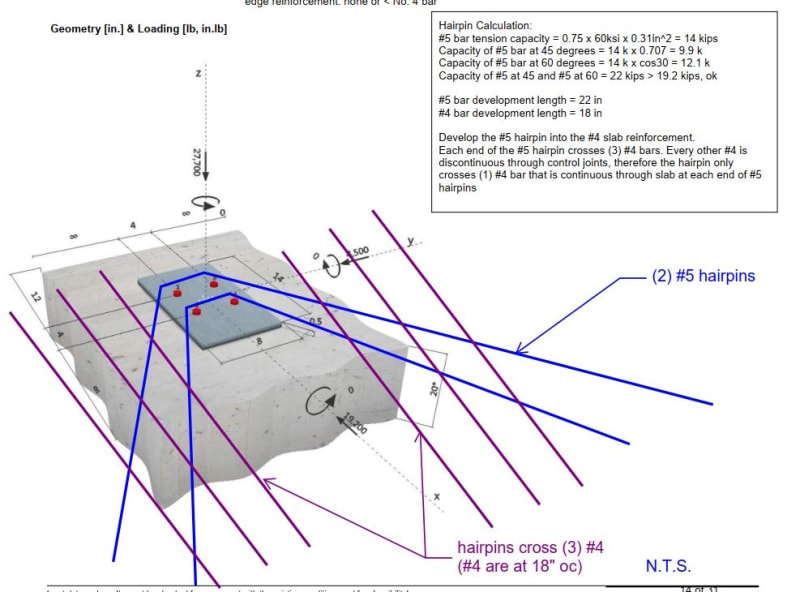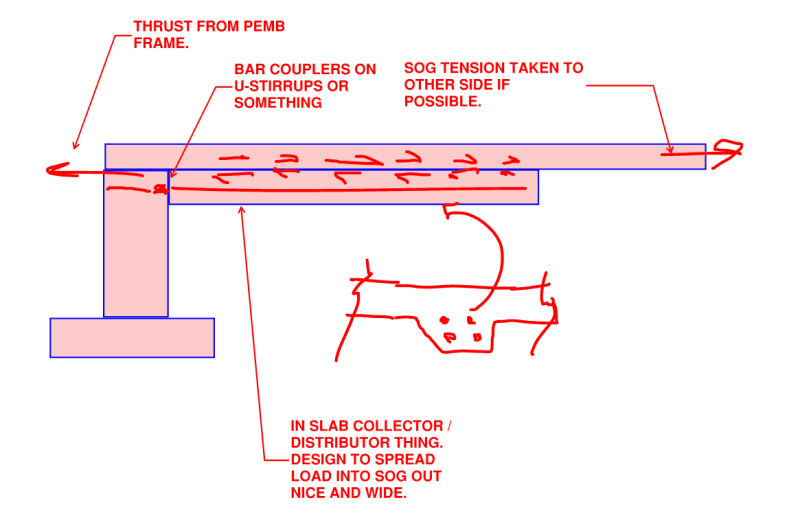I've done the lapping of hairpins with the slab reinforcement. I've also done tension ties (usually poured before the slab, and with a bond breaker over the top, all bars mechanically spliced). I've only dumped it into the footings on tiny little buildings - it's crazy expensive and, since our frost depth is only 8", a "typical depth" footing gives very little passive resistance and friction is near zero.
Usually, the hairpins are just anchor reinforcement. I design them as Aesur mentioned - not to resist the thrust as part of the global load path, but just to make sure the thrust doesn't blow out the edge of the slab before it can get to the place I want it to go.
Options are essentially limited to a moment resisting footing/pier or a tension tie in or below the slab.


